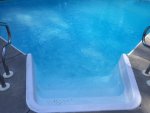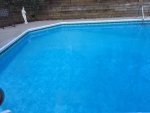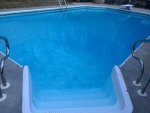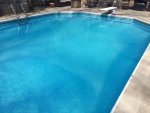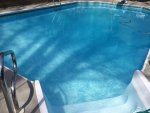Hi there. Just finishing up lunch and had a good chat with a true tech at Jack's. in my situation, he's recommending I start with the purple first anyway, not because of the possible cloud factor, but because its more aggressive on iron and he's not loving my .4 ppm rate. Said the magenta was specifically designed for plaster start up and to clean cells, but not as aggressive on sequestering metals.
We discussed long term phosphate loading via purple, and he's heard of some users who build up approx 1,000 ppb in 4-6 weeks, which would actually corroborate my 2-year, 2-season change from 25,000 to 37,000.
He discussed his belief that without calcium (due to my soft water) to bind with metal plus sequestrant, the phosphate would not be as likely to in part be carried to filter -- he thinks for those with higher calcium, they're carrying some of the phosphate out and ergo lower readings.
He shares the suspicion that real world phosphate levels can get quite high before interfering with swg production at the plate level, but has seen the phosphate scale situation once or twice in 5 years as a tech, so knows its a real thing.
He personally suggests I raise my calcium to 200 not to protect liner, but to protect my heater from negative csi aggressiveness depending on other parameters, and also in an effort to get my .4 ppm iron down closer to .1 ppm via sequestrant filtering. I will give these thoughts a chew



